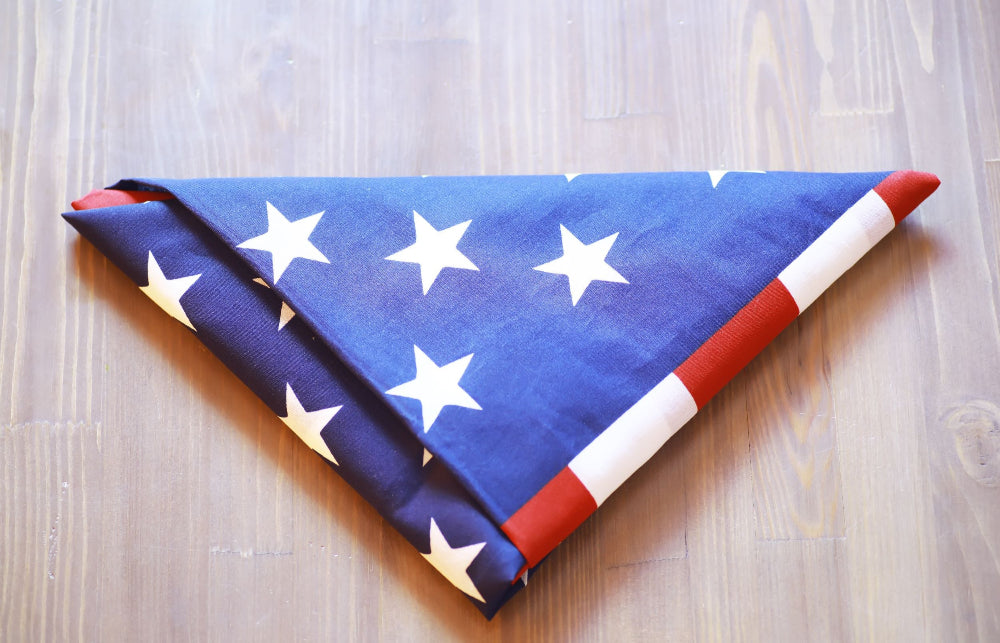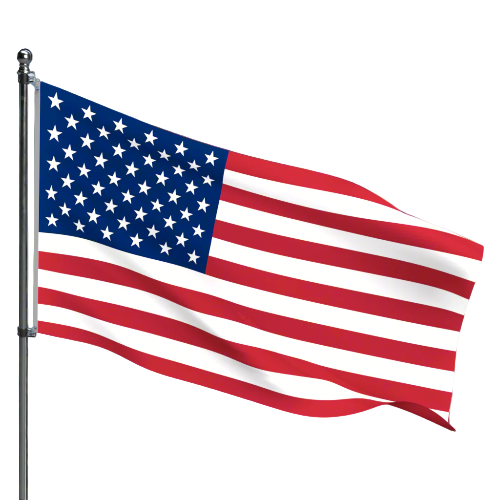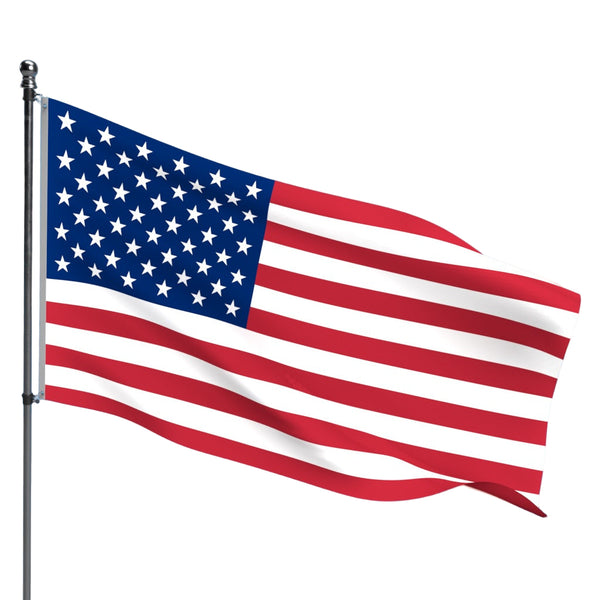Caring for Your Flag: Cleaning, Folding, and Storing Tips

Share
Caring for Your Flag: Simple, Respectful Ways to Clean, Fold, and Store It
Flags do more than wave in the wind—they carry stories. The American flag on a porch, a memorial flag folded in honor of a loved one, or a state or military flag passed through a family all deserve thoughtful care. This guide explains how to keep your flag looking sharp without damaging it, how to fold the U.S. flag correctly, and how to store it so it lasts. You will also find practical schedules, care tips for different materials, and clear guidance on when it is time to replace or retire a flag respectfully.
Why Taking Care of Your Flag Matters
Sunlight fades color, wind frays the fly end, and moisture weakens fibers. A few small routines—gentle cleaning, timely repairs, smart storage—extend the life of a flag and preserve what it represents. If you are unsure where to start, use the checklists below as a simple plan you can follow each season.
Cleaning Your Flag Without Damage
Before any wash, check the label or product page for care guidance. The goal is to remove dust, salt, pollen, and light soil without stressing stitches or dyes.
Nylon and polyester (outdoor): These synthetics are durable and respond well to a gentle wash. Use cold water, a mild detergent, and a gentle cycle. Rinse thoroughly and air-dry flat or on the line. Avoid hot dryers that can shrink or wrinkle headers and degrade stitching.
Cotton (ceremonial/indoor): Wash by hand in cool water with a delicate soap. Support the weight of the wet fabric and avoid twisting. Blot with a towel and lay flat to dry away from direct heat or sun.
Quick stain guide: Treat mud and dirt with a cool water rinse first; use a tiny amount of detergent only if needed. For salt spray, a fresh water rinse is often enough. Do not use bleach, optical brighteners, or harsh spot removers that can weaken fibers or bleed colors.
Simple schedule: If flown daily, wash every one to two months in calm seasons and after any stretch of storms, wildfire smoke, or heavy pollen. If flown occasionally, clean whenever the fabric looks dusty or dull.
Folding the American Flag with Purpose
The traditional triangle fold protects the flag and shows respect. A second person makes it easier, but one person can manage with a table.
- Hold the flag taut and flat. Fold lengthwise once, bringing the stripes over the stars. Smooth the fold.
- Fold lengthwise again so the union of stars is on the outside and at the top corner.
- Beginning at the striped end, fold a small triangle up, then continue folding triangles along the length until only a neat blue field remains.
This fold is used for memorial and ceremonial settings, but it is a good practice for storage anytime. If your flag is very large, fold on a clean surface to avoid dragging edges.
Storing Your Flag Safely
Clean, dry fabric lasts longer. Store only when the flag is fully dry to prevent mildew or dye transfer.
Everyday flags: A breathable storage tube or cotton bag prevents sharp creases and keeps dust away. Avoid plastic bags that hold moisture.
Memorial or heirloom flags: A display case or archival box helps preserve shape and color. If boxed, place acid-free tissue between folds and keep the box in a cool, dry space away from direct sunlight.
Environment: Basements can be damp and attics can overheat. A main-floor closet with stable temperature and humidity is usually best.
Inspection and Light Repairs
Look over the flag during each wash and after storms. Small issues caught early prevent bigger damage.
- Fly end: If the edge shows light fray, trim loose threads and re-hem before damage spreads.
- Header and grommets: Make sure the canvas header is firm and the grommets are secure; replace worn snaps or rings.
- Stitching: Watch for popped stitches at stripe joins and the canton seam. Lock-stitched seams resist unraveling, but any gap should be repaired promptly.
Choosing the Right Material for Your Conditions
Outdoor nylon: Lightweight, bright color, quick-drying, and easy to fly in light breezes. A strong all-around choice for most homes and storefronts.
Polyester: Heavier and more abrasion-resistant. Ideal for open, windy, or coastal locations where the fly end sees frequent snap forces. The weight reduces flutter in gusts and slows wear.
Indoor pole-sleeve flags: Best for sanctuaries, schools, offices, and auditoriums. Add gold fringe if your setting calls for it, and use a stand that supports the pole without wobble.
How Long a Flag Typically Lasts
Lifespan depends on wind, UV exposure, altitude, salt, and how often you fly it. As a general guide, a daily-flown nylon flag lasts about three to six months in moderate wind; a polyester flag can last four to eight months in harsher wind. Indoor flags often last for years with careful handling. Rotating between two flags—one flying while the other rests—extends service life and keeps your display fresh.
When to Replace a Flag
Replace a flag when the fly end is heavily shredded, colors are severely faded, seams open along the stripes or canton, or the header and grommets no longer hold safely. A simple rule: if you would not feel proud handing the flag to a veteran, it is ready to be replaced. Retire the worn flag respectfully and raise a new one.
Respectful Retirement Options
When a flag is no longer a fitting emblem for display, retire it in a dignified way. Community groups such as American Legion posts, VFW halls, and Scout troops hold retirement ceremonies and often accept worn flags year-round. Some organizations also offer mail-in retirement or textile disassembly methods. If you choose to retire a flag privately, follow local regulations, keep the process solemn, and handle ashes or remnants with care.
Everyday Habits that Add Months of Life
- Use a sturdy bracket or halyard and a tangle-free spinning pole to reduce twist and strain.
- Check that the flag does not snag on shingles, brick edges, trees, or hardware.
- Rinse off salt, dust, and pollen after rough weather and let the flag dry completely.
- Lower the flag in severe storms and during prolonged high-wind events when possible.
- Keep a spare on hand for rotation, special occasions, and respectful display during cleaning.
Frequently Asked Questions
Can I iron my flag? Use low heat, and place a pressing cloth between the iron and the fabric. High heat can damage synthetic fibers and warp the header.
How often should I wash a daily-flown flag? About every one to two months in typical conditions, and anytime it looks dusty or salty after weather events.
Should I wash a memorial or burial flag? Only if absolutely necessary and with great care. Many families choose to keep these flags untouched and protected in a case.
Do brighteners or bleach help whites? Avoid both. They can weaken fibers, cause yellowing, or lead to color bleed. Gentle detergent and cool water are safer.
A Respectful Finish
Caring for a flag is simple once you establish a few routines: clean gently, fold correctly, store thoughtfully, and replace or retire when wear compromises the emblem. These habits honor the meaning of the flag while keeping your display crisp and dignified—at home, at work, and in the community.
Time for a New Flag?
If your flag is ready to be replaced, choose a durable, Made-in-USA flag in the material that suits your environment. Outdoor nylon is a bright, everyday option, while polyester stands up to persistent wind. Indoor pole-sleeve sets provide a formal look for ceremonies and offices. Pair your flag with reliable hardware and lighting to complete a respectful display.




